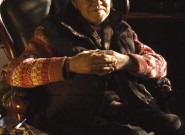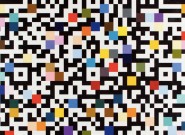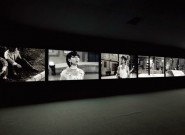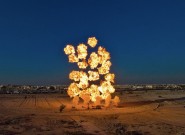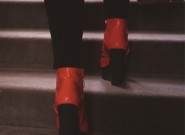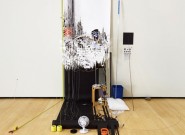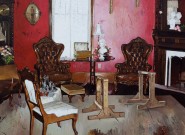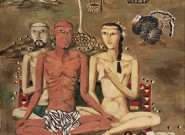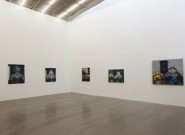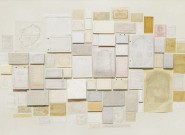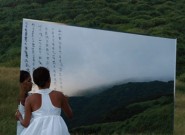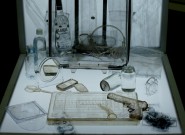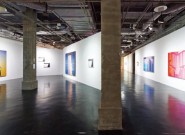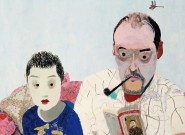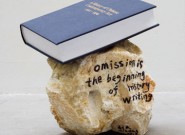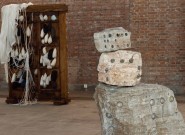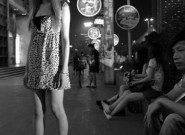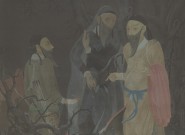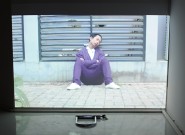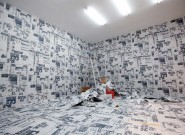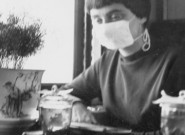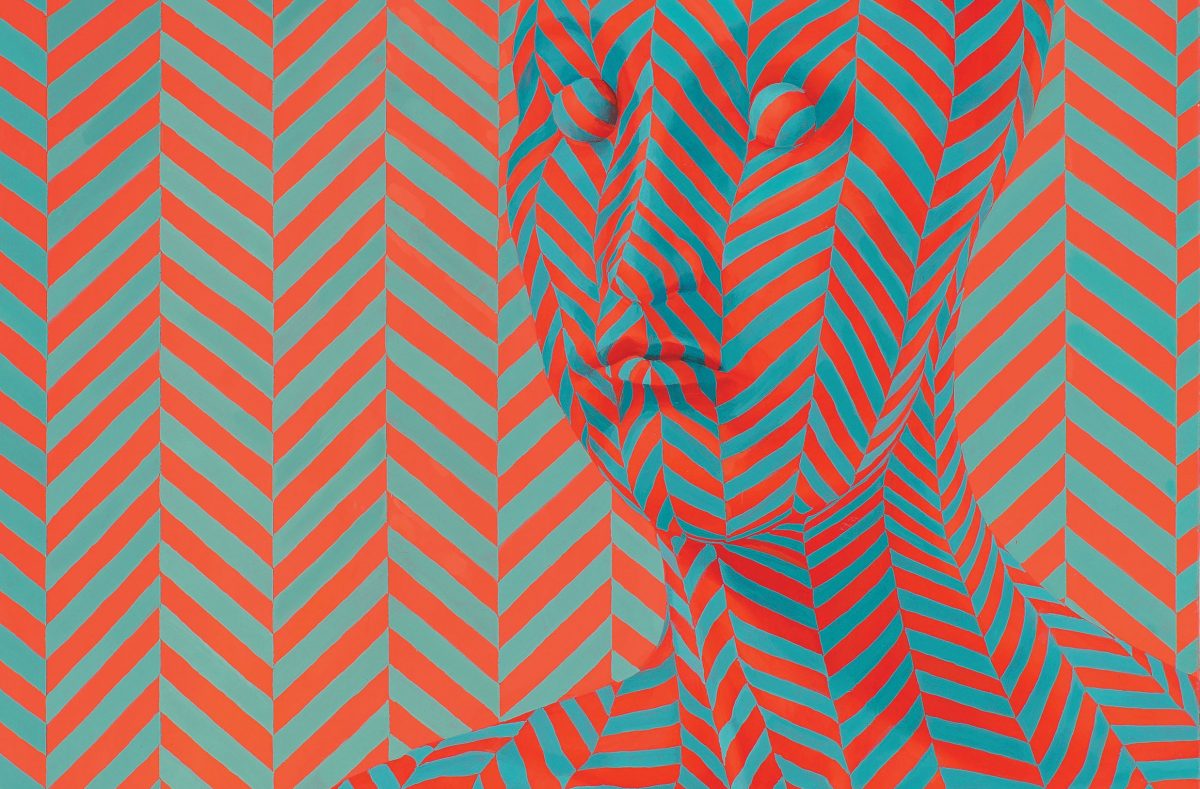MU XIN, WHOM we had the good fortune of meeting and interviewing in December 2010, was one of the world’s greatest artists. He made a profound impact on anyone who had such good fortune. For many others, who knew him through his writings and art, his impact was equally as powerful. Throughout his creative life,…
Read MoreDouglas Coupland wants to know what being alive means to you. What would you say to someone 100 years in the future, or 100 years in the past? His own answers are provided by his work in the group exhibition “By Sea, Land & Air, We Prosper” at Art Labor 2.0. This is Vancouver’s motto,…
Read MoreYang Fudong’s film noir aesthetics have been employed in both his monumental arthouse epic Seven Intellectuals in a Bamboo Forest (2003-2007), and in his exuberant foray into advertising for Prada’s First Spring (2010). Considering this, it is difficult to know where this artist stands and for what. The answer may be clearly developed in his…
Read MoreCai Guo-Qiang’s work straddles a sometimes-uncomfortable line between spectacle and meaning. The title of his blockbuster solo show at MATHAF in Doha, “Saraab”— which translates from the Arabic as “mirage”— as well as its “explosion event” in the desert nearby are a wholly appropriate allusion— officially, to the subject matter of the works, but unintentionally,…
Read MorePHOTOGRAPHY: Liang Yue STYLIST: Moni MAKEUP AND HAIR: May STYLIST ASSISTANT: Mayble PRODUCER: Aimee Lin MODEL: Sisi
Read MoreThe relationship between old master or modernist art and contemporary work is not immediately easy to comprehend. The paintings of Manet and Matisse reveal obvious visual connections to Giotto’s frescoes, but installation, performance, and video art appear to have radically different concerns. In China, the connection between traditional and present-day art is even more elusive….
Read MoreOil painting is dead, and if you believe the cynics, it has been for a long time. It died with the arrival of conceptual art, or photography, or Damien Hirst and those infernal YBAs— call it whenever you want, that does not change the fact that it’s still dead. Why paint anymore when there are…
Read MoreIN ACCORDANCE WITH the auction house pattern of holding major sales in the spring and autumn, the Chinese art market saw a succession of major auctions throughout the fourth quarter of 2011. The crowded schedule spanned autumn and winter, and as the schedule progressed, the season seemed symbolic of the state of the art market,…
Read MoreWang Xingwei’s painting is essentially isolated from the critical establishment. His take on art history starting in the mid-1990s was nothing more than a bone tossed to the critics. In the so-called “narrative” paintings that received the most attention, the repetition of the everyday mixed with literary themes of sex, violence, illusion, and death made…
Read MoreUsing things from the past, both material (old documents or objects) and immaterial (memories or forms), has already become stale artistic practice; many artists nowadays instead exert great effort searching for the differences, or the dialectical relationship, between the past and the present. Although Hong Hao makes use of “old” materials in this exhibition, it…
Read MoreHaving missed the Hou Hanru-curated photography exhibition “The Power Of Doubt” this spring at La Fabrica gallery in Spain, we were fortunate to find it this past December at the Times Museum in Guangzhou. On the occasion of the show, we took the opportunity to interview this curator. LEAP Why did you decide to bring…
Read MoreFOR HER MOST recent work Charwei Tsai has amassed a large pile of white feathers. The pile is placed on a circular mirror and heaped up to about half a meter high and one meter across. Down is mixed with wing feathers to make the whole pile seem fluffy and insubstantial. Were this not inside…
Read MoreThis project deals with the practice of exchange between poetry and art; it is also a plan of considerable duration and continuity that is still in the midst of execution. Positioned within the private art museum landscape as it is today— its good mixed in with its bad— it is an undoubtedly imaginative initiative. Its…
Read MoreFor those who have been paying attention to or are simply familiar with Jiang Zhi’s artistic practice this past decade, signs and echoes of Jiang’s previous works abound in the exhibition “A Thought Arises,” whether in the exquisite depth of the video installation The Light of Transience or the poetic wisdom expressed in the needles…
Read MoreTHE SUBJECTS OF my paintings are all familiar places and people, and that is because knowing them well, I feel confident in drawing them. Recently I made some small paintings on the streets of Beijing, chatting with the old men and women living in the hutongs, whose accents are so familiar to me. The scenes…
Read More“It is the objective of the artist who is concerned with Conceptual art to make his work mentally interesting to the spectator, and therefore usually he would want it to become emotionally dry.” Sol LeWitt, Paragraphs on Conceptual Art, 1967 Life is full of endless anticipation. Except for blood and flesh, dreams and anticipation have…
Read MoreNARI WARD IS a Jamaican-born installation artist whose work forges new semiotic possibilities for our relation to objects. Ever since his breakthrough work Amazing Grace (1993), in which he amassed nearly 300 abandoned baby carriages from Harlem streets and bound them together with fire hose in a disused firehouse, the “reinvention” of found materials has…
Read MoreChutian Golden Paper 20100520 Fashionable Girl Stands Barefoot in Street for 13 Hours From 10 a.m. on May 18, our staff received calls nonstop from readers, who reported a fashionably dressed pretty young woman motionlessly standing barefoot at the intersection of Jiefanggongyuan Road and Huiji Road. Her abnormal behavior attracted considerable attention until around 1…
Read MoreWESTERN PHILOSOPHY, especially Kantian philosophy, is consistent on one point: the distinction between noumenon— the thing in and of itself— and phenomenon— the thing as perceived. Traditional Chinese philosophy, however, holds no such distinction; if anything, the two are combined in the arching concept of the bengen (literally, the “root” of all things). If one…
Read MoreOutside an upscale shopping district in the center of Wuhan, following a graffiti-covered wall around an inconspicuous corner, one may find the entrance to Chi K11 Art Space. The small elevator, with only enough elbow room for two people, does not hold a single clue to indicate that there might be an art space upstairs,…
Read More
